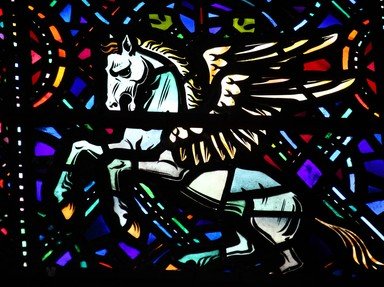Quiz Answer Key and Fun Facts
1. One of the greatest tales of classical mythology is the story of the Trojan War, a ten-year war between the Trojans, led by their mighty champion, Hector, and the Greeks, led by which ruthless man who sacrificed his own daughter to sail to Troy?
2. Many modern-day languages use words that have origins in Greek and Roman mythology. The name of which Roman goddess of agriculture, mother of Proserpina and counterpart to the Greek Demeter, was the inspiration for a term used to describe a breakfast food commonly made of grain and eaten with milk?
3. A number of historical cities in Greece are believed in mythology to have been the home of an oracle. What popular tourist site in Greece claims to have once been home to the Pythia, oracle of Apollo?
4. Religions both modern and historical have stories about what happens after one leaves the land of the living, and many tell of different places where the souls of the good and the souls of the wicked go to rest (or not) for eternity. Where, in the underworld of Greek mythology, could souls go to spend their afterlife in the fields of paradise?
5. Monsters often appear in the ancient tales of Greek and Roman heroes who fought them on their way to fame and glory. The hero Perseus once crossed paths with a particularly nasty monster, whose head was crowned with snakes and whose eyes could turn anyone instantly to stone. Medusa, the only mortal monster who possessed the power to turn humans into stone, was one of three sisters collectively known as what?
6. Quite a few sun-gods appear throughout Greek and Roman mythology, often with responsibilities and myths that overlap one another. The earliest of the Greek sun gods to appear was a Titan, the son of Gaea (earth) and Uranus/Ouranos (sky) and father to Helius/Helios (sun), Eos (dawn), and Selene (moon). What was his name?
7. Constellations grace the skies every night that have names and stories born out of mythology. One such constellation, Taurus, contains a star cluster named for seven sisters called the Pleiades who were pursued by Orion and his dog, Sirius. Which sister of the Pleiades became the mother of Hermes, god of messengers and thieves?
8. A common theme seen in Greek and Roman mythology involves ordinary people being turned into plants or animals, from Hera turning Io into a cow, to Daphne being made into a laurel tree after fighting off Apollo's advances. Which self-absorbed man of myth was so obsessed with his own reflection that he died of thirst and starvation and was then turned into a flower?
9. For millenia, people have worshipped their gods in buildings designed to pay homage to a particular deity or group of deities. Which famous church in Italy, that was once a temple designed to honor every god and goddess of Rome, got its name from a word meaning "all the gods"?
10. One of the biggest events in classical mythology was a fierce battle between the Olympians and the Titans. In the revolt against Cronus and the Titans, Zeus led his siblings to a hard-fought victory that ended with the Olympians gaining control of the seas, the sky, and the underworld. What was this ten-year-long war between all of the gods called?
Source: Author
kaddarsgirl
This quiz was reviewed by FunTrivia editor
looney_tunes before going online.
Any errors found in FunTrivia content are routinely corrected through our feedback system.

